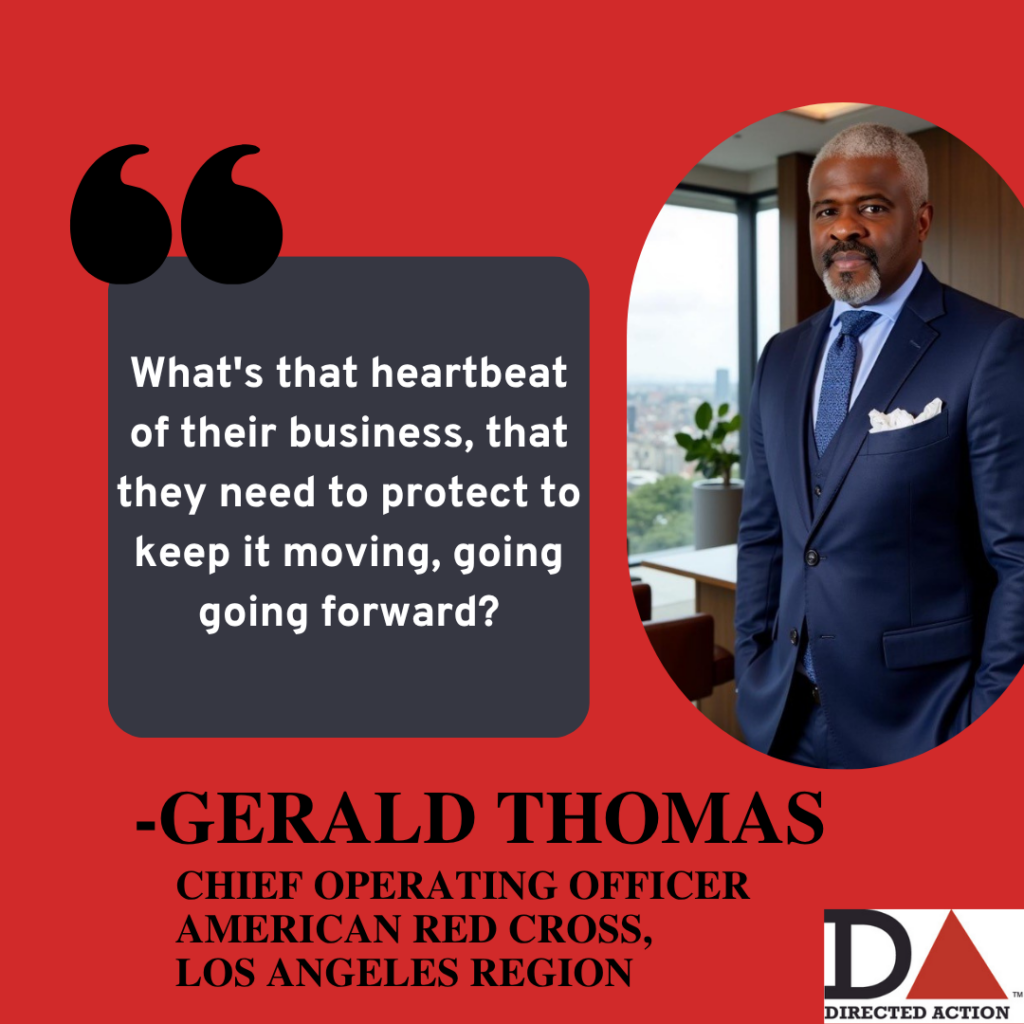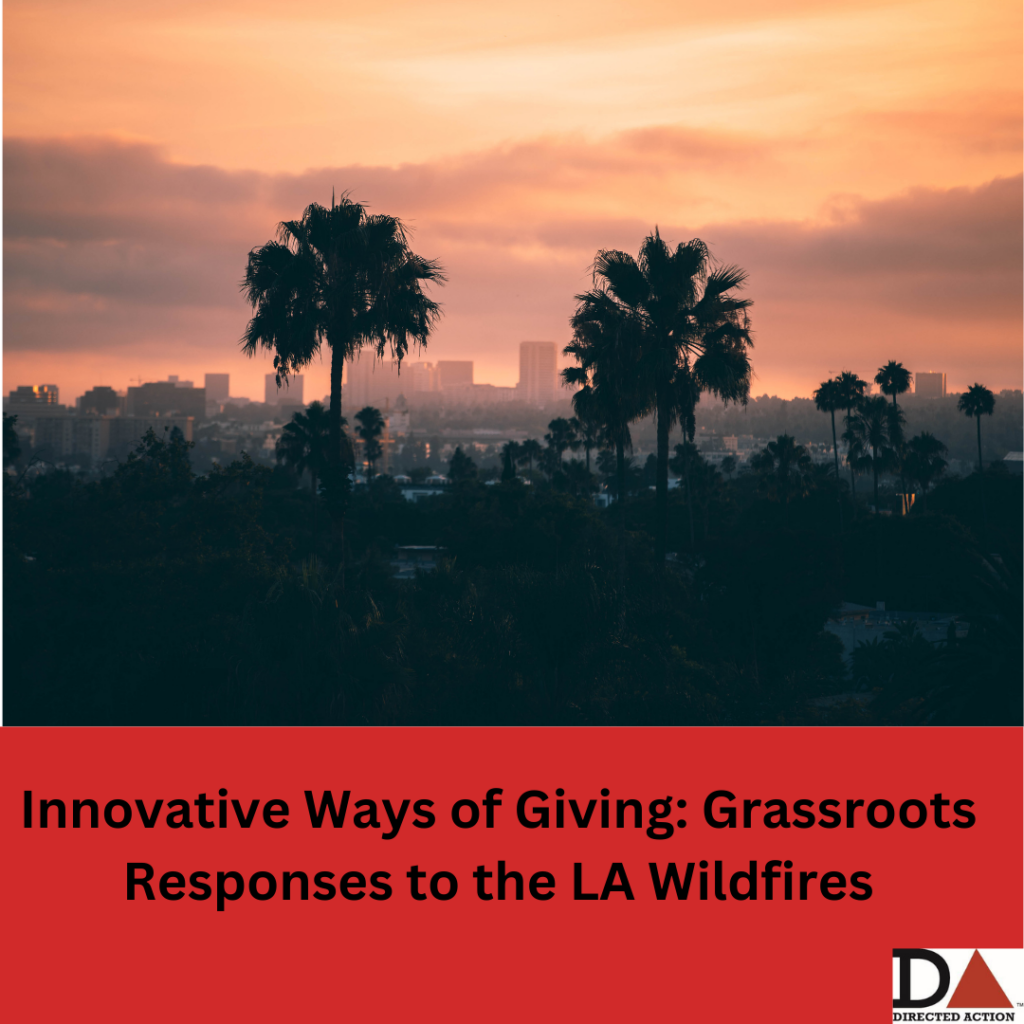“You need to have the resources to support you and your family for seventy-two hours at least.”
Living in Los Angeles, I have written about our city’s response to the devastating wildfires in January and how individuals and businesses can prepare to recover, continue and be resilient when facing catastrophe.
In an effort to dig deeper, I interviewed experts in our region that focus on each of these three critical methods for approaching preparedness – Recovery, Continuity and Resilience.
The first of these with Gerald Thomas, COO of the American Red Cross in Los Angeles focuses on Disaster Recovery. We discuss the nuances of disaster preparedness, the critical role of volunteers, and the importance of community trust in recovery efforts. Thomas shares strategies for responding to disasters and highlights the human element that drives successful recovery.

The Heartbeat of Preparedness
At the core of disaster response is readiness. Thomas emphasizes that readiness begins with understanding the critical infrastructure that needs protection. His question, “What’s that heartbeat of their business?,” highlights the need for organizations to identify their most vital assets. This focus on the essentials ensures that when disaster strikes, the response is swift and effective.
We dive into the importance of training and scenario-based exercises. Thomas shares insights from their military background, noting that decision-making speed is paramount during crises. “The rapidity of that decision-making process is gonna be key to our success during this time.” He underscores the need for organizations to prepare their teams through realistic training, allowing them to respond effectively when the moment arrives.
Volunteers: The Unsung Heroes
With almost 20,000 volunteers eager to assist during recent disasters, the conversation shifts to the role of volunteers in disaster recovery. Thomas describes how 9,000 of these volunteers were quickly trained and deployed. “We put them in situations where it’s less risky,” illustrating how the organization ensures that new volunteers gain confidence before diving into more challenging roles.
“They give that gift of time, and it is extremely valuable.”
The Importance of Community Trust
The conversation also touches on the trust communities place in organizations like the American Red Cross. “We enjoy great community trust,” Thomas says, reinforcing the idea that successful disaster response hinges on this trust. When communities believe in the organizations that serve them, they are more likely to engage and cooperate during recovery efforts.
The American Red Cross works closely with local nonprofits and organizations, enhancing their capacity to respond effectively. “All of this recovery will be community-led and Red Cross supported,” highlighting the collaborative nature of disaster recovery. This approach not only empowers local organizations but also fosters a sense of ownership within the community.
Lessons from the Field
As an example of the flexibility and adaptability, Thomas describes a situation where, due to a logistical error, a food distribution vehicle failed to arrive. With hundreds of people waiting for meals, they took immediate action by purchasing food from a nearby restaurant. “I bought out a Bojangles,” he says.
Preparing for the Unexpected
Throughout the conversation, we stress the importance of having a plan in place, not just for disasters like wildfires or hurricanes, but for any unexpected event. “You need to have the resources to support you and your family for seventy-two hours at least,” they reiterate, emphasizing the need for personal preparedness.
Families should discuss their emergency plans, ensuring everyone knows their roles and what to do in case of separation. Everyone has to know their role, down to the family pet.
The Dual Track of Business Continuity
Taking care of yourself and your family is a part of the continuum to business continuity and resilience. “I don’t think you can have one without the other,” Thomas says, suggesting that business owners must simultaneously plan for recovery and business operations.
This dual approach allows businesses to remain functional during crises, whether through virtual operations or relocating activities to unaffected areas. The key is thinking proactively so people are prepared the moment the crisis hits.
The Role of Leadership in Crisis
Leadership emerges as a critical theme in the conversation. Thomas attributes many of the skills he applies to disaster recovery to his time in the military. As a leader, “It’s about being an active listener and setting people up for success,” he explains, underscoring the importance of effective leadership in fostering a supportive environment.
This emphasis on leadership resonates throughout the interview, as the guest shares insights on how to manage large teams of volunteers with diverse backgrounds and experiences. By focusing on the organization’s values and principles, leaders can create a cohesive team that works effectively in high-pressure situations.
A Model for Future Responses
We wrap up by thinking about American Red Cross as a model for disaster response in the nonprofit sector. Thomas notes that despite limited resources, the organization effectively meets community needs by focusing on its strengths and collaborating with other agencies. “We try and stick to those things we do really well,” reinforcing the idea that specialization and collaboration are key to effective disaster response.
Finally, Thomas leaves us with a powerful takeaway: our response to disaster can be guided by careful planning, collaboration, and a commitment to serving others.



